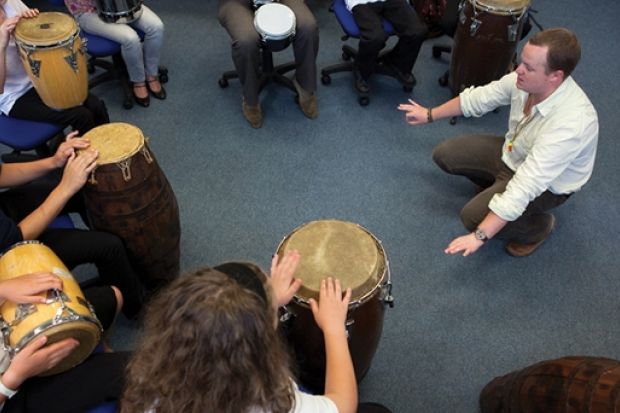Universities have borne the brunt of cuts in the number of places for training secondary school teachers, with some having their allocations cut by hundreds.
An analysis by Times Higher Education of data from the Training and Development Agency for Schools shows that while the total number of secondary school teacher-training places has been cut by 14 per cent, for university providers this figure rises to per cent.
"We were given indications that there were likely to be significant reductions in terms of the number of places, but it doesn't make it any easier to swallow," said James Noble-Rogers, executive director of the Universities' Council for the Education of Teachers.
The first whammy
Mr Noble-Rogers warned that this may be the first salvo in a "triple whammy" of cuts to initial teacher training in universities. Institutions may face further cuts in future years as a result of government plans to shift teacher training from universities to schools.
In addition, higher education providers are still waiting for information on the amount of funding they will receive per student.
Every university that offers secondary school teacher training lost places. Edge Hill University received the biggest increase in primary teacher-training allocations (an extra 157 places) but also the largest fall in secondary teacher-training places (326 places), leading to a 12 per cent decrease overall.
Other notable losers include Canterbury Christ Church University, which lost 298 places, and Liverpool John Moores University, which lost 192 places.
John Cater, vice-chancellor of Edge Hill, said that the loss of income for his institution could be as high as £1.4 million.
"We are a big business, but that still represents a loss of about 1.5 per cent of our income," he said. "When you add that in to the cuts elsewhere, you can see how these particular cuts will have a significant effect."
Professor Cater added: "I think that this is, in part, driven by the funding climate the government believes it to be in rather than a realistic assessment of the number of people who will be needed to teach in secondary schools in the coming years."
Mr Noble-Rogers agreed: "Making cuts of this scale is unnecessary, it will damage high-quality provision and it is ill at ease with the government's stated intention of bringing more highly qualified people into teaching."
He also warned that the scale of the cuts may make some courses unviable. "Once these high-quality courses are closed, it will be very difficult to get them back," he said.
sarah.cunnane@tsleducation.com
• For a full breakdown of allocations by institutions, see related file, right.
Register to continue
Why register?
- Registration is free and only takes a moment
- Once registered, you can read 3 articles a month
- Sign up for our newsletter
Subscribe
Or subscribe for unlimited access to:
- Unlimited access to news, views, insights & reviews
- Digital editions
- Digital access to THE’s university and college rankings analysis
Already registered or a current subscriber? Login
